|
part 4 |
On the wild
billows..... ships, boats, a raft..... everything that floats on the water (but sometimes sinks). |
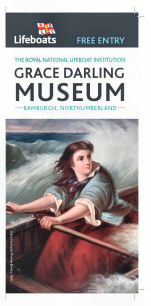 Grace Darling.
Grace Darling.Grace Horsley Darling (1815–1842) was an English lighthouse keeper's daughter, famed for participating in the rescue of survivors from the shipwrecked Forfarshire in 1838. The paddle steamer ran aground on the Farne Islands off the coast of Northumberland in northeast England; nine members of her crew were saved. Darling's achievement was celebrated in her lifetime: she received a large financial reward in addition to the plaudits of the nation. Her deed was committed to verse by William Wordsworth in his poem Grace Darling (1843). A lifeboat with her name was presented to Holy Island. One of a series of Victorian paintings by William Bell Scott at Wallington Hall in Northumberland depicts her rescue. The McManus Galleries in Dundee includes three paintings by Thomas Musgrave Joy which celebrate Grace Darling's deeds with the Forfarshire. At Bamburgh, there is a museum dedicated to her achievements and the seafaring life of the region. The Royal National Lifeboat Institution Mersey class lifeboat at Seahouses bears the name Grace Darling. |
|
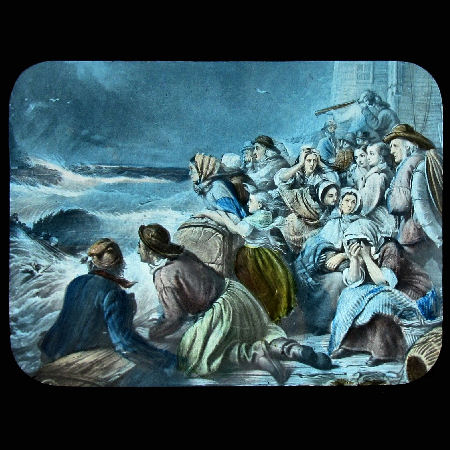 |
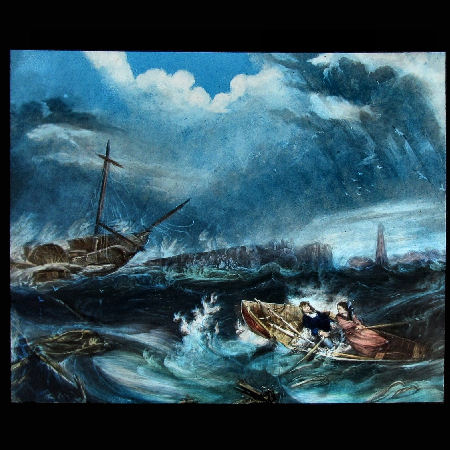 |
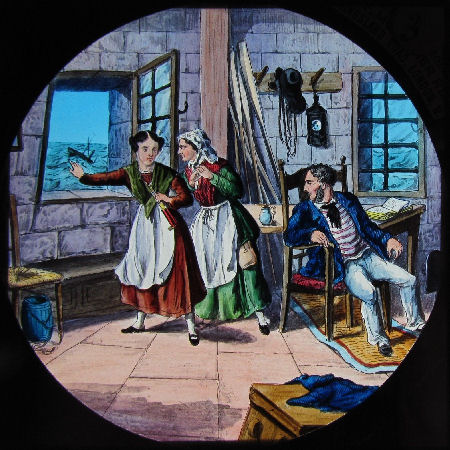 |
 |
 |
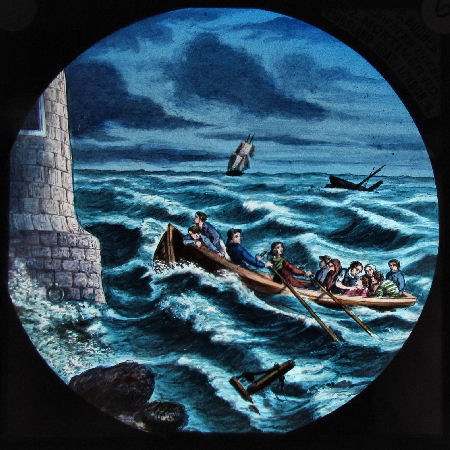 |
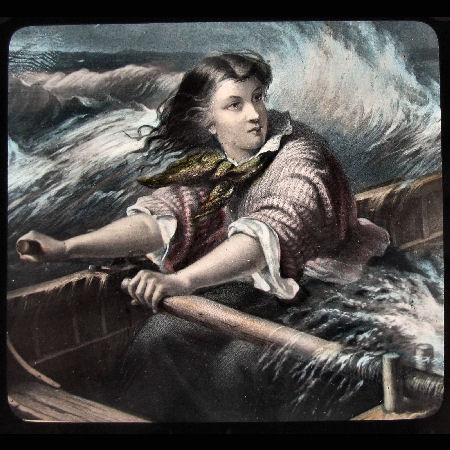 |
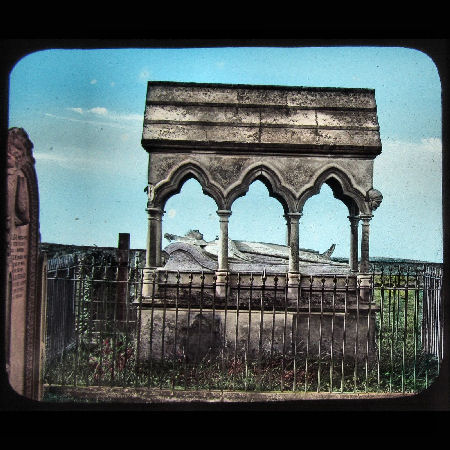 |
|
Because of the differences in style of these slides,
it is likely that this series is composed of a number of series.
Slide 2 is a painting by Henry Perlee Parker, slide 7 is a detail of a
painting by Thomas Brooks, both on display at the RNLI Grace Darling
Museum in Bamburgh, Northcumberland. The last slide
shows Grace Darling's tomb in the graveyard directly opposite the museum. Probably only the slides 3, 4, 5 and 6 belong to the original series and the other plates have ever been added. |
|
|
The wreck of the Hesperus.
A set of 10 magic lantern slides from York & Son, England, after the poem 'The Wreck of the Hesperus' by the American poet Henry Wadsworth Longfellow. The captain of a schooner takes his daughter on board for company. He ignores the warning of another sailor that a severe storm is approaching. When the storm arrives, the skipper wraps his daughter in his oilskin coat and ties her to the mast to prevent her from going overboard. His daughter calls desperate for help and prays to God that he will calm the seas. The old skipper dies because of the icy cold and somewhat later they suffer shipwreck. The next morning, a frightened fisherman sees the girl's body afloat, still tied to the mast. |
 |
|
| 1. It was the Schooner Hesperus. | ||
 |
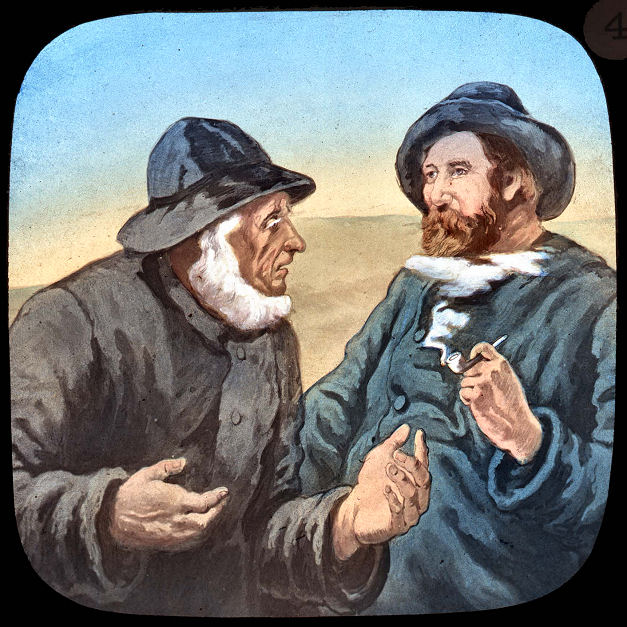 |
|
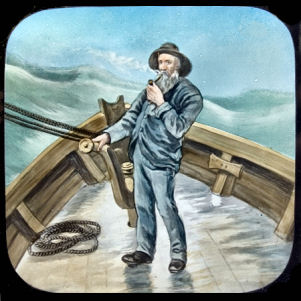 |
||
| 2. Blue were her eyes as the fairy flax. | 3. The Skipper he stood beside the helm. | 4. Then up and spake an old sailor. |
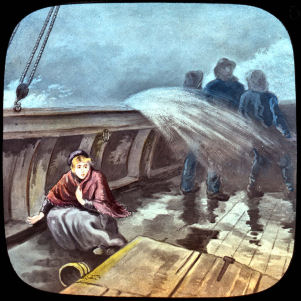 |
 |
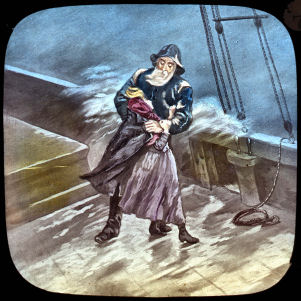 |
| 5. Last night the moon had a golden ring. | 6. The snow fell hissing in the brine. | 7. He wrapt her in his seaman's coat. |
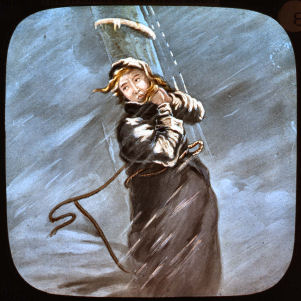 |
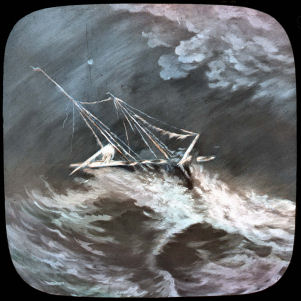 |
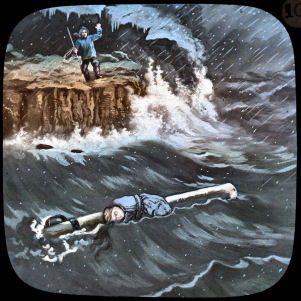 |
|
8. And bound her to the mast. |
9. Like a sheeted ghost, the vessel swept. |
10. A fisherman stood aghast. |
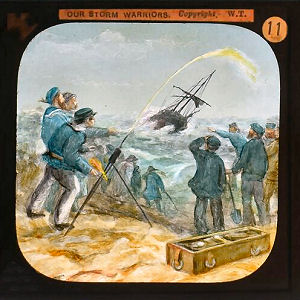 |
Our storm warriors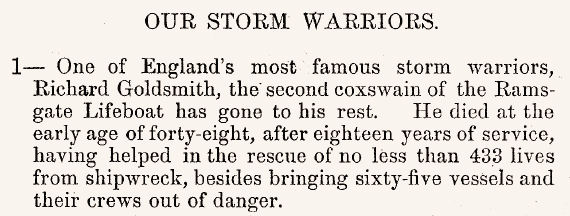 A set of 12 magic lantern slides made by Walter Tyler. |
|
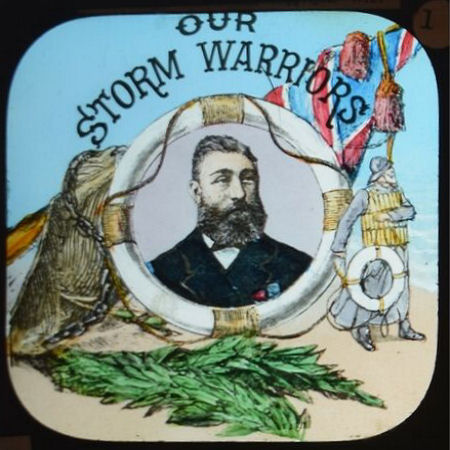 |
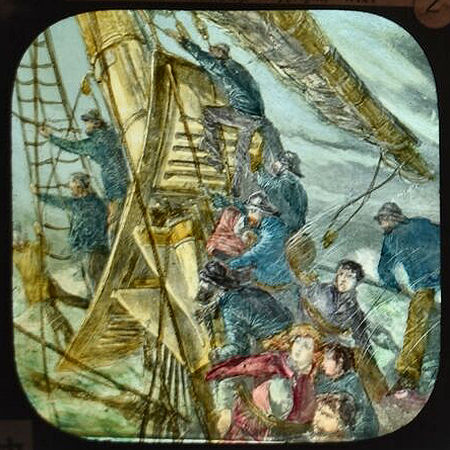 |
|
| 1. Introduction | 2. Her crew fast freezing in the rigging | |
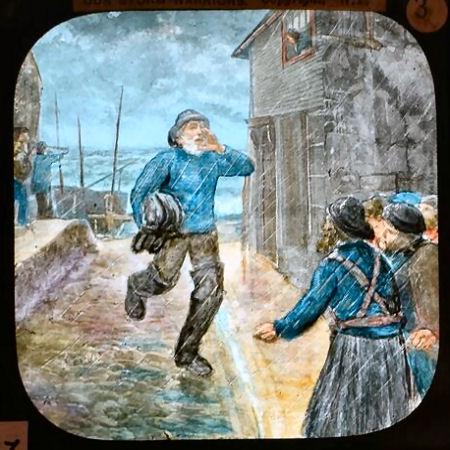 |
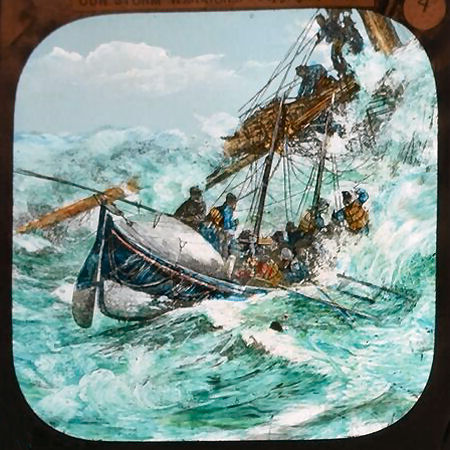 |
|
| 3. All hands man the life-boat | 4. Our Gallant Storm Warriors | |
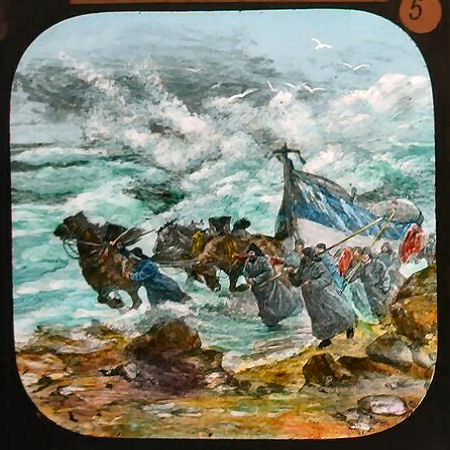 |
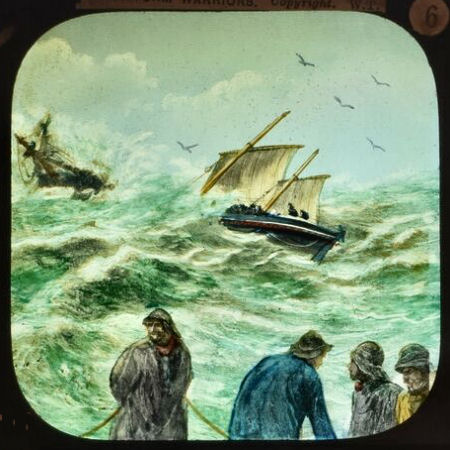 |
|
| 5. Launching the Life-boat | 6. To the help of the helpless | |
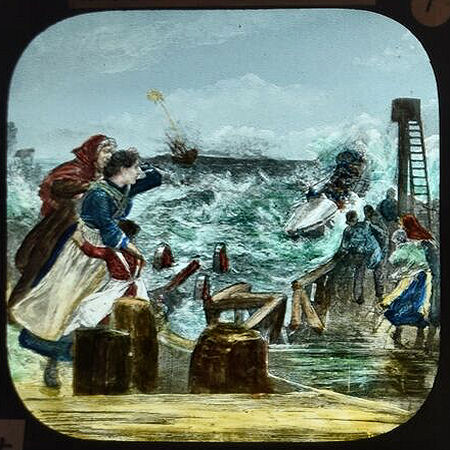 |
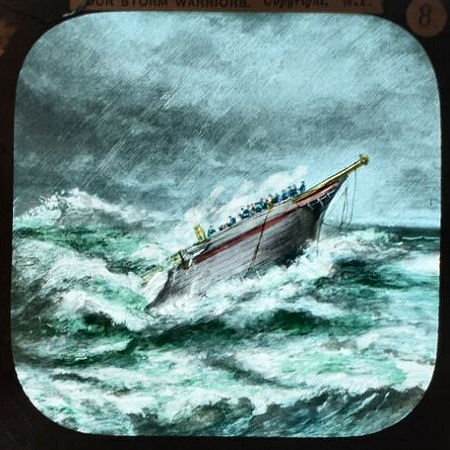 |
|
| 7. A terrible night | 8. Battling with the sea | |
 |
 |
|
| 9. Perils of our Life-boat crews | 10. The Volunteer Life Brigade at work | |
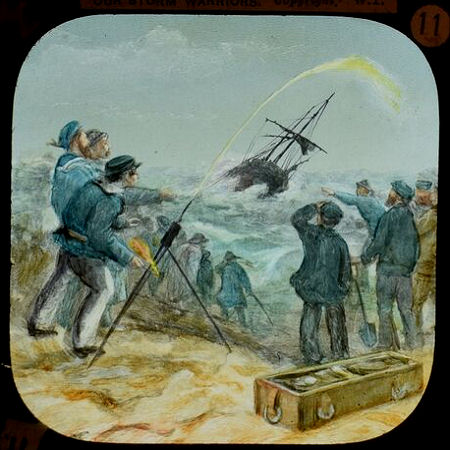 |
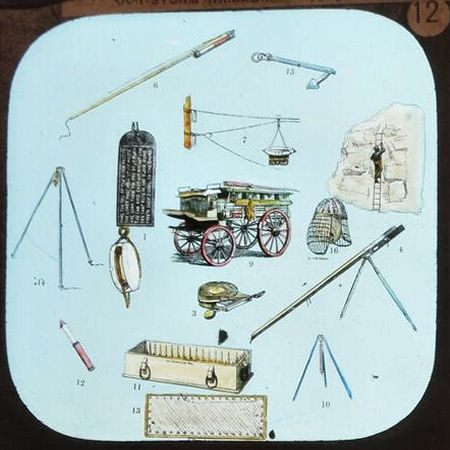 |
|
|
11. Firing a rocket |
12. Rocket apparatus |
|
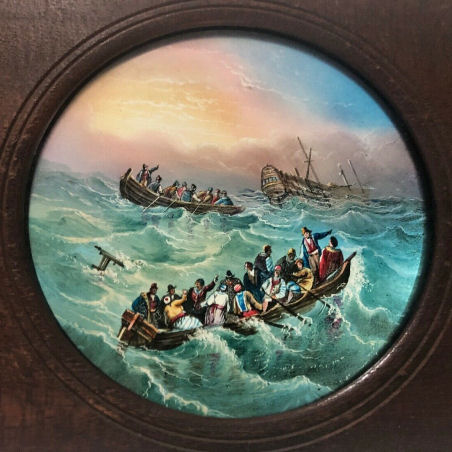 |
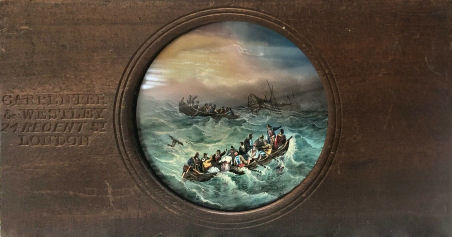  |
|
| Marvellous magic lantern slide in a wooden frame depicting the survivors of a shipwreck, made by Carpenter & Westley, 24 Regent St, London. 18 x 10 cm. | ||
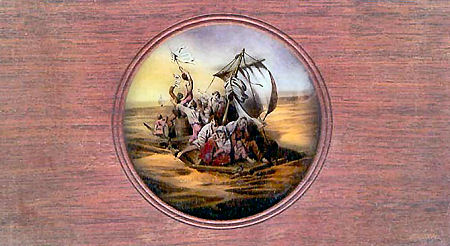 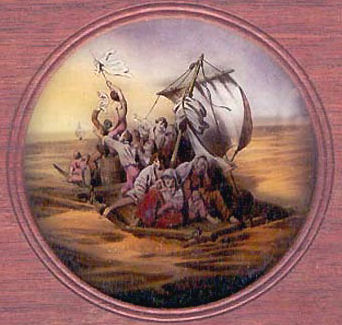  |
 The original painting. The best known work of the French painter Jean Louis André Théodore Géricault is entitled 'The Raft of the Medusa' (c. 1819). It depicts the aftermath of a contemporary French shipwreck, whose survivors embarked on a raft and were decimated by starvation before being rescued at sea. The painting was depicted on several magic lantern slides and..... 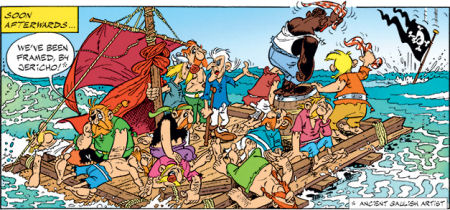 .... many years later parodied in the comic strip Asterix and Obelix. |
|
|
|
||
| |
©1997-2021 'de Luikerwaal' All rights reserved. Last update: 06-11-2021. |
|